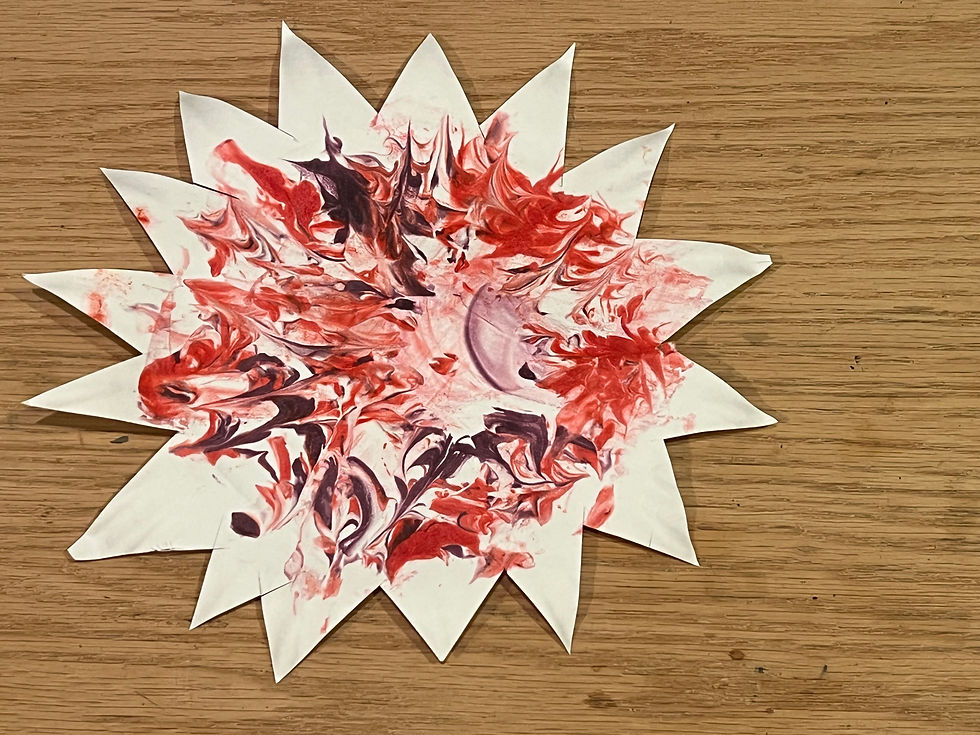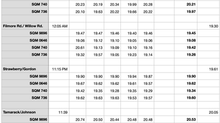Paper Plate Activities for the Sun
- Chuck Bueter
- Feb 18, 2024
- 1 min read
Updated: Jul 8, 2024
Engage your solar eclipse audience with paper plate activities that are related to the sun. While some activities can be done on any one day--and are especially valuable if April 8, 2024, is cloudy--a few require extended observations over several months. Some are easy, some are hard.
For more activities see the original Paper Plate Education and its continuation at Nightwise-Paper Plate Education.
Mask for Solar Shades https://mynasadata.larc.nasa.gov/lesson-plans/solar-eclipse-safety-activity Make and decorate a mask to hold solar shades. While the top half shields the sun, the bottom opening allows you to look down for shadow bands. From NASA. Adapted to make pre-cut masks in bulk at https://www.nightwise.org/single-post/make-solar-shade-masks-in-bulk. | |
|---|---|
Sub-Solar Cup https://analyzer.depaul.edu/paperplate/subsolar_cup.htm Video: https://analyzer.depaul.edu/paperplate/Video/clips/SubSolarCupActivity.mov Make a Sub-solar Cup to demonstrate where the sun is directly overhead at that moment. Extend the activity over several months to plot an analemma on the globe. | |
Tracking Sunspots https://analyzer.depaul.edu/paperplate/Tracking%20Sunspots.htm Record the view of the sun through a telescope by plotting sunspots on a paper plate. | |
Sunrise Sunset
https://analyzer.depaul.edu/paperplate/Sunrise%20Sunset.htm
Video: https://analyzer.depaul.edu/paperplate/Video/clips/SunriseSunset.mov
Track the position of the rising or setting sun relative to your local horizon. Activity extends for several months.
| |
Altitude of the Noon Sun II https://analyzer.depaul.edu/paperplate/Altitude%20of%20Noon%20Sun%20II.htm Video: https://analyzer.depaul.edu/paperplate/Video/clips/AltitudeOfTheNoonSun.mov Demonstrate the changing altitude of the noon sun through the seasons for any latitude. | |
Portable Sundial
Make a basic sundial using paper plates, with versions ranging from complicated to simple.
Portable Sundial I
https://analyzer.depaul.edu/paperplate/Portable%20Sundial.htm
Portable Sundial II
https://analyzer.depaul.edu/paperplate/Portable%20Sundial%20II.htm
Portable Sundial IV
https://analyzer.depaul.edu/paperplate/Portable%20Sundial%20IV.htm
| |
Platisphere for Eclipse Projection
https://www.nightwise.org/single-post/best-ways-to-project-the-sun
Video: https://analyzer.depaul.edu/paperplate/Video/clips/Platisphere.mov
Use the holes of a Platisphere to project the eclipsed sun onto a surface.
| |
Shaving Cream Sun https://spaceplace.nasa.gov/sun-paper/en/ Use shaving cream and food coloring on a paper plate to make a dynamic looking sun. From NASA. | |
Post-Eclipse Corona Immediately after the eclipse, record your recollection of the sun, including the corona and sunspots. | Image... |
Wholemovement https://www.wholemovement.com Video: https://youtu.be/FJ4VIetBbYg?si=IsRezsx_8ZDhx0wu Take artwork to a new level by exploring the information of a circle. Fold paper plates into fabulous designs that express your eclipse experience. Presented by Bradford Hansen-Smith; supported with videos and books. | |
Moonthly Eclipse [Sorry, text is not uploaded; only image is available.] https://analyzer.depaul.edu/paperplate/Moonthly%20Eclipse.htm Demonstrate why eclipses do not occur every month both at new moon and at full moon. | |
 | Mission Patch https://analyzer.depaul.edu/paperplate/Mission%20Patch.htm Design your own solar eclipse mission patch, or replicate one from a sun-related NASA mission. |
Adjustable Telescope Stop Stop down the incoming sunlight for a reflector telescope when using a Sun Funnel. Two overlapping plates, each with a chunk cut out, can be rotated to control the brightness and to prevent the optics from overheating. Note: You may not look out the eyepiece! This activity is only for use with a Sun Funnel, for it still allows significant sunlight into the scope. | |
 | When Do Lunar Eclipses Happen? https://www.jpl.nasa.gov/edu/teach/activity/when-do-lunar-eclipses-happen/ Adapt NASA activity to show why solar eclipses don’t happen during every new moon. |



















































